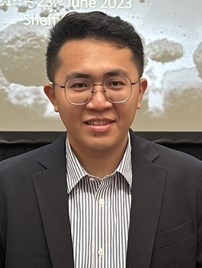Invited Speaker

Assist. Prof. Kai-Yang Chang
Department of Chemical Engineering, Feng Chia UniversitySpeech Title: Continuous Crystallizing System on Copper Removal in Form of Copper Hydroxide Particles from Industrial Electroplating Wastewater in a Fluidized Bed Reactor
Abstract: Copper is the third most commonly used metal worldwide and is one of the essential elements for modern industrial development. Its widespread applications span industries such as printed circuit board manufacturing and electroplating, resulting in the presence of copper-containing wastewater across numerous sectors. Traditionally, chemical precipitation has been widely employed to remove copper ions from wastewater. However, this method generates sludge with a water content exceeding 90%, necessitating additional downstream processing to reduce moisture content for reuse or disposal. Fluidized Bed Homogeneous Crystallization (FBHC) effectively converts the sludge into high-density granules (with moisture content below 5%) using a single-unit reactor, thereby minimizing the formation of high-moisture sludge and significantly enhancing operational efficiency.
This study investigates the use of industrial-grade NaOH as a precipitant for the removal of copper ions from acidic copper-containing wastewater. The research focuses on optimizing the operational parameters of FBHC for recovering copper metal ions from wastewater. Under optimal conditions, at a pH below 7.0, copper ions can be removed as copper hydroxide with a removal efficiency exceeding 99% and a crystallization ratio of 95%. At a pH above 7.0, copper ions are removed as black copper oxide with a removal efficiency of over 99.9%, reducing the residual copper concentration to below 1.0 mg/L. FBHC facilitates the recovery of valuable resources from etching waste solutions, effectively mitigating resource depletion and environmental pollution, and achieving sustainable waste resource utilization.
